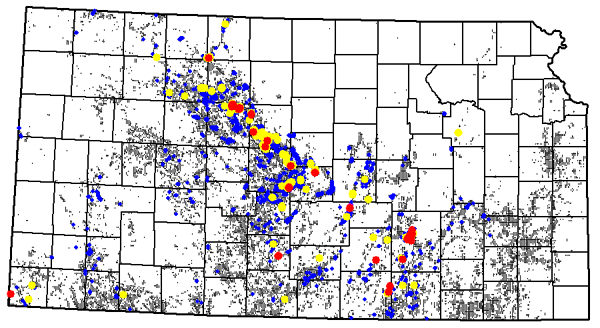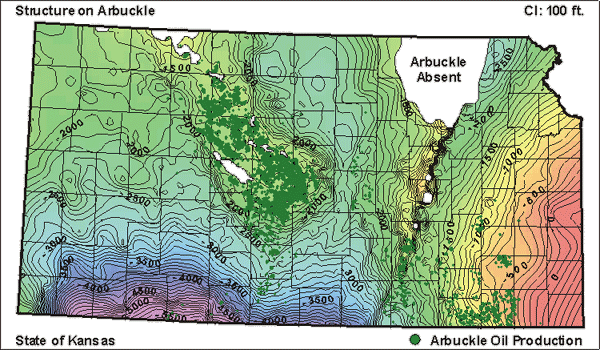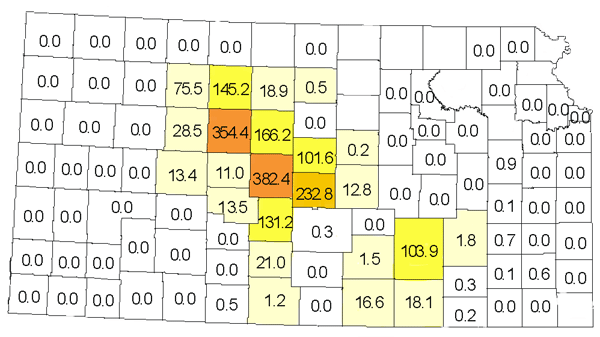
Integrating Plug to Well-Scale Petrophysics with Detailed Sedimentology to Quantify Fracture, Vug, and Matrix Properties in Carbonate Reservoirs
Kansas Geological Survey
Open-file Report 99-47
 |
Integrating Plug to Well-Scale Petrophysics with Detailed Sedimentology to Quantify Fracture, Vug, and Matrix Properties in Carbonate Reservoirs |
Kansas Geological Survey Open-file Report 99-47 |
 |
||||||||||
| (Gerlach, 1998) | ||||||||||
| Figure 1 | ||||||||||
|
||||||||||
Kansas reservoirs have produced nearly 6 billion barrels of oil to date, with
a significant majority of the past production coming from reservoirs in proximity
to the Central Kansas Uplift (CKU; Figure 1). Arbuckle Group reservoirs account
for nearly 40% of the cumulative production with most production also occurring
on the CKU (Figure 2).

Figure 2
Gerlach, 1998; http://www.kgs.ku.edu/DPA/Plays/ProdMaps/arb_oil.html)
Whereas Arbuckle reservoirs produce from 31 counties statewide, a significant portion of the total production has come from the 10 counties coinciding with the CKU (Figure 3). Within these counties, the Arbuckle has produced over 1,629 MMBO, representing nearly 68% of the total production from this region (Figure 4). Of the total Arbuckle oil produced, over 85% has been produced by 21 major fields (Figure 5).
Arbuckle Total Oil Production by County (MMBO) (Gerlach, 1998)

Figure 3

Figure 4

Figure 5
Arbuckle reservoirs produce by strong bottom water or edge water drives so that reservoir pressures usually remain at or near initial pressures even after large volumes (millions of barrels) of water have been removed from a reservoir over a producing time period of 20-40 years.
|
|
e-mail : webadmin@kgs.ku.edu
Last updated November 2002
http://www.kgs.ku.edu/PRS/Poster/1999/99-47/P1-03.html